The fallacy of CTR as a KPI: Redefining PPC ad success
Click-through rate is no longer the measurement of ad relevance and quality it once was. Here's where you should focus now.
Click-through rate (CTR) is a cornerstone metric of PPC marketing.
Calculated as the percentage of people who click on an ad after seeing it, CTR is often treated as a key performance indicator (KPI), commanding disproportionate attention and optimization efforts.
Google search interest in the topic of CTR far exceeds that of conversion rate (CVR), even though conversions more directly align with the health and success of a business.

This hyperfocus on CTR largely stems from outdated reasoning that deserves a closer look.
Outdated reason 1: A high CTR indicates an effective and relevant ad
Since the launch of AdWords, Google has exalted click-through rate as a measurement of relevance, explaining:
“A high CTR is a good indication that users find your ads and listings helpful and relevant.”
But the changes Google Ads has made over the years have decoupled CTR from relevance.
The quality of impressions is declining as the quantity increases
Early on, advertisers had far more control over who saw – and didn’t see – their ad, meaning they could target ads to their ideal market while keeping everyone else from viewing an ad impression.
Google Ads has made several changes leading to inflated impression numbers from non-targeted audiences:
Expanded location targeting
Targeting a location no longer means you’re targeting people who are actually in a location. For location-based businesses, this irrelevant traffic skews CTR data.
A high CTR ad for “NYC Photography” targeted at NYC now reaches people nationwide who are “interested in” NYC. The specific “NYC Photography” headline underperforms in California and Texas. A broader “Photography Packages” headline wins more clicks. The ad with the highest CTR is the one that’s actually the least relevant to the studio’s target audience and offers.
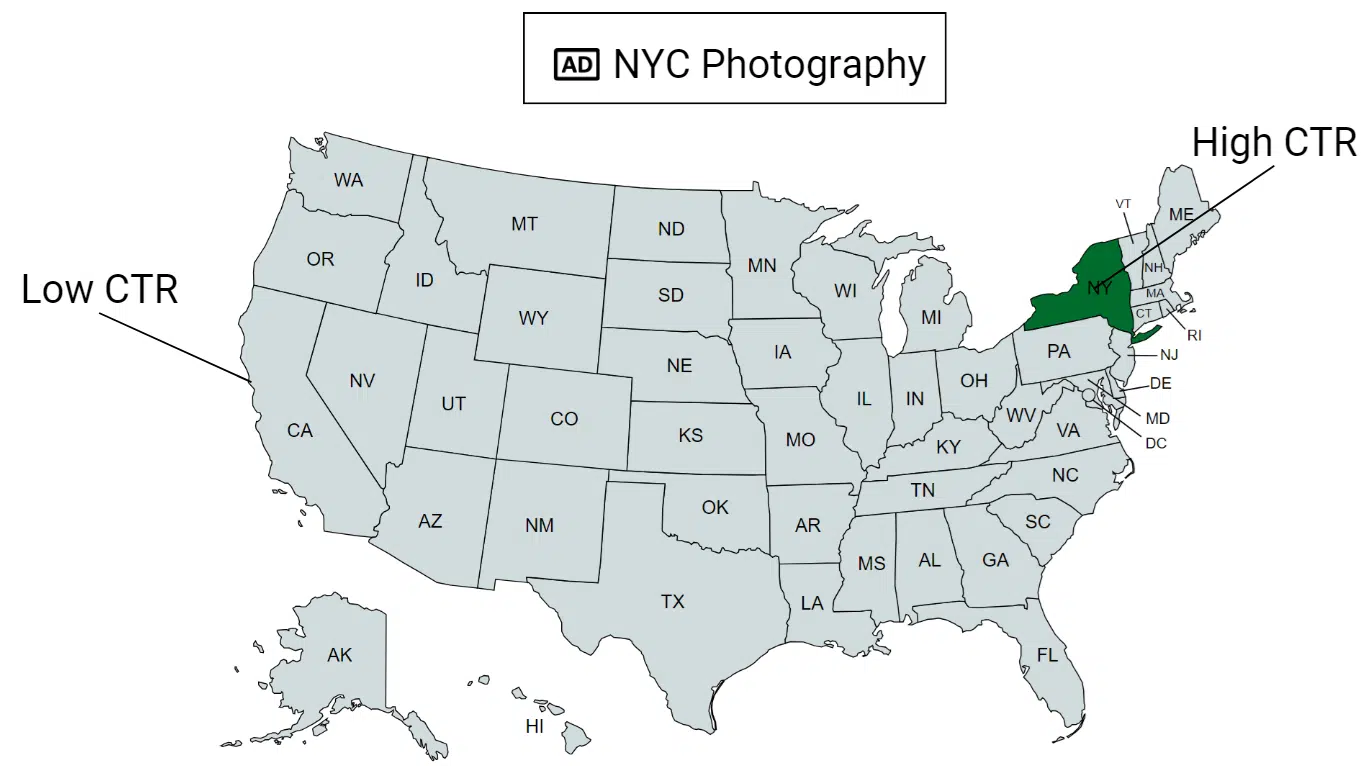
Expanded match type definition
Google Ads has broadened its approach to match types, affecting how closely a user’s search needs to align with an ad’s keywords. This expansion leads to ads appearing for less relevant or related search queries, distorting the true effectiveness of CTR as a performance metric.
The exact keyword [luxury spa treatments] could now match against searches for “cheap spa days” or “home spa ideas.” Once again, the most relevant headline is unlikely to have the highest CTR when the search terms aren’t in true alignment with the keyword.
Limited search term data
Google Ads’ reduction in search term data transparency marks a significant shift from the past, where advertisers had fuller access to the actual queries triggering their ads.
This change keeps advertisers from fully identifying and negating irrelevant or low-intent queries, increasing irrelevant impressions and clicks and introducing lurking variables affecting metrics like CTR.
The prominence of ads is increasing
Advertisers once had to fight to win the click, but it’s now more difficult to qualify the click.
Expanded real estate
When CTR was introduced as a measurement of ad relevance, ads on Google were confined to right-rail only, with just 95 characters of text.
Today, Responsive Search Ads (RSAs) have tripled to 270 characters. With the retirement of the right-rail, competing organic links are now pushed further down the SERP instead of appearing side-by-side.
With the inclusion of images, sitelinks and other assets, both branded and non-branded ads can now occupy the entire “above the fold” real estate of the SERP.
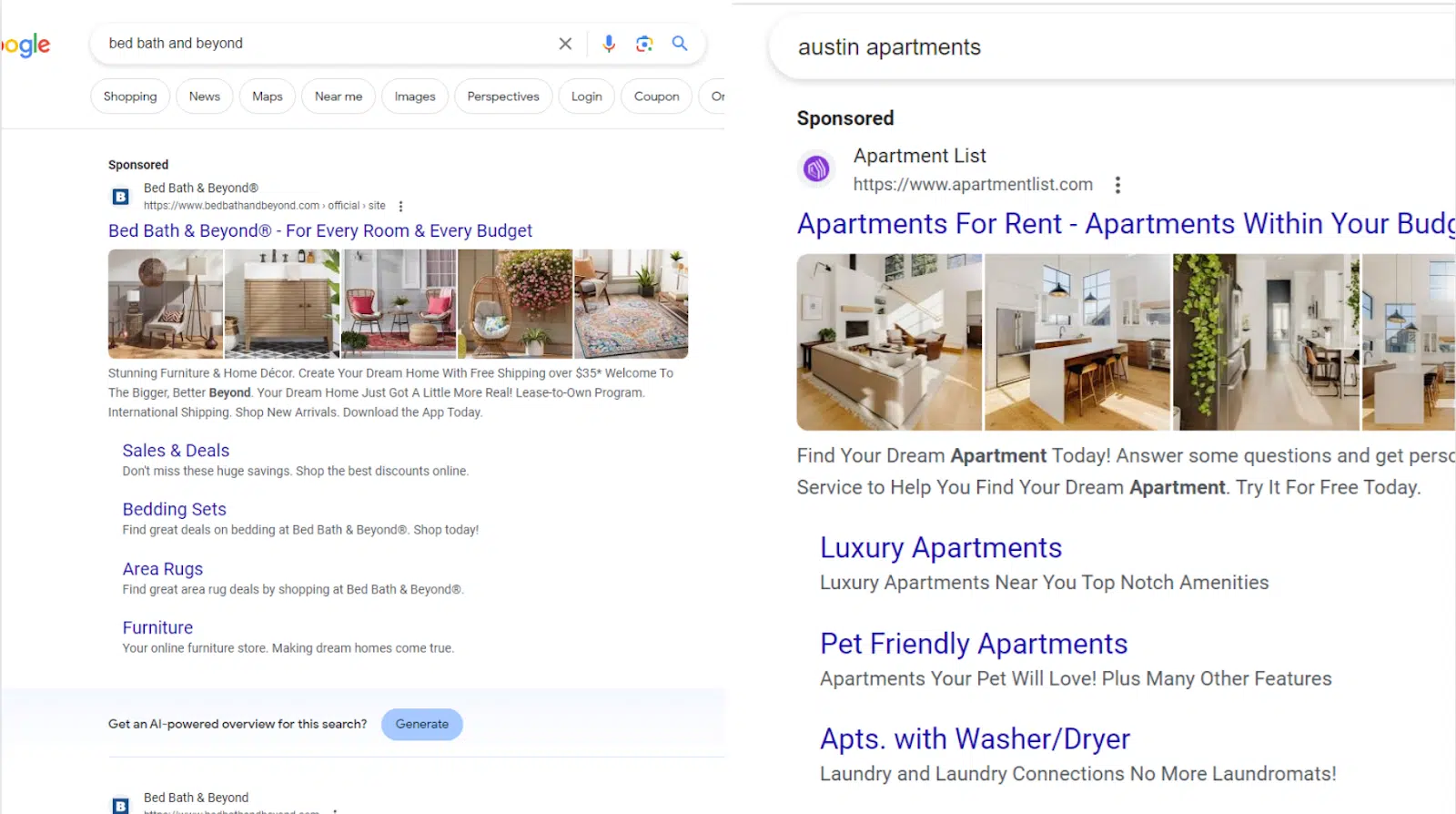
When 100% of the SERP is a single ad, it’s almost more of a challenge not to win the click.
The function of RSAs
RSAs are designed to match search queries. Google describes this process:
“The more headlines and descriptions you enter, the more opportunities Google Ads has to serve ads that more closely match your potential customers’ search queries, which can improve your ad performance.”
This approach focuses on aligning with the search query rather than accurately representing your business’s products and services.
When there’s a mismatch between the query and your offer, the ad reflects back to the searcher what they want, which can drive additional clicks that don’t lead to sales.
Outdated reason 2: Increasing CTR improves ad rank and lowers advertising costs
Google promotes CTR as a consideration in Ad Rank, which determines the position of your ad and the cost you pay for the click:
“CTR also contributes to your keyword’s expected CTR, which is a component of Ad Rank.”
This raises two questions: what is the correlation between actual CTR and click costs, and is the juice worth the squeeze to decrease costs by increasing CTR?
Your actual CTR isn’t part of the ad rank equation
When evaluating CTR as a factor in ad quality, Google doesn’t use your actual click-through ratio (total clicks ÷ total impressions). Instead, it uses your “expected CTR,” which only considers “historical impressions for exact searches of your keyword.”
The fact that only exact searches enter into this calculus is key. It means that your ad’s performance against inflated and irrelevant impressions has nothing to do with your real-time auction costs or position.
It’s not a sale if you don’t need it
Marketers often optimize ads for CTR under the misconception that it saves money. Not only is this not how Ad Rank works, it’s simply the wrong approach to savings.
Imagine a model that did award lower click costs for higher CTR. Buying more clicks that don’t convert isn’t a good business decision, even if those clicks are discounted.
And yet, this is exactly what happened in paid search last year.
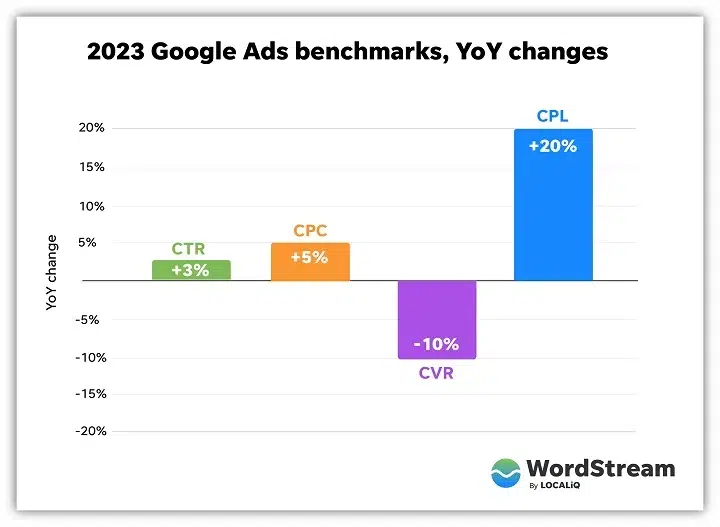
CTR increased 3% year over year while conversion rate dropped 10%, according to WordStream’s 2023 Google Ads benchmarks. The extra clicks weren’t converting!
The low conversion rates, combined with an increased CPC (despite a higher CTR), led to a whopping 20% increase in cost per lead year over year.
Kerri Amodio shared the results of her test designed to find the best CPL for her client:

The Test ads’ CTR was 8% lower than the Control group, costing them an extra $0.01 per click, and ultimately saving $10 per conversion.
Outdated reason 3: Post-click performance is outside the scope of paid search
Many folks in marketing will argue that the job of an ad is to win the click; it’s the job of the offer/landing page/lead gen form/sales team to close the sale.
Because the ads team often doesn’t control or even influence the post-conversion process, CTR is used as a success metric for performance that’s within their control.
It’s true that ad clicks don’t directly drive leads and sales, but the quality of the click (and the intent of the person doing the clicking) absolutely affects the likelihood of conversion.
Using a post-click success metric such as conversion rate can help marketers evaluate the true contribution of an ad while looking only at CTR, which ignores the value of running high-intent ads in the first place.
Reviewing and optimizing for CVR is especially important in the landscape of RSAs, where an ad crafted to win an irrelevant click can boost CTR but result in fewer conversions.
In his SMX Next talk, Frederick Vallaeys shared Optmyzr data comparing CTR and conversion rates against the number of headline variants in an ad:
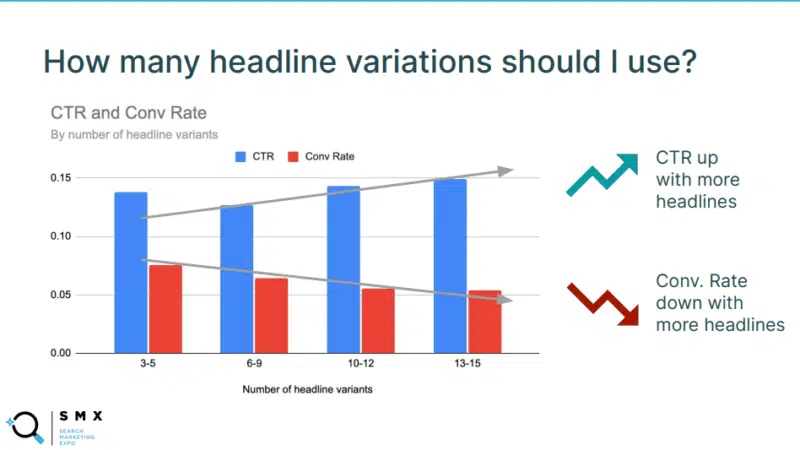
This data shows an inverse relationship between CTR and CVR and the number of headline variants and conversion rate.
Meanwhile, Google promotes the idea that varied headlines increase CTR and conversions, but supporting data is scarce.
Their documentation claims a 12% conversion increase from increasing ad headlines and following other recommendations. However, this is based on a two-day date range picked from the several years RSAs have been running.

So, is CTR just a vanity metric now?
While CTR is no longer the measurement of ad relevance and quality it once was, it’s still a useful metric.
CTR offers quick feedback on newly launched assets, which is especially valuable when budgets are small and conversions are slow.
It’s also useful to evaluate CTR when reviewing your ad against the Keyword Text segment to identify misalignment between keywords and ad text.
This data can help you make decisions about pausing or removing assets, creating new ad groups, or tightening/clarifying existing messaging.
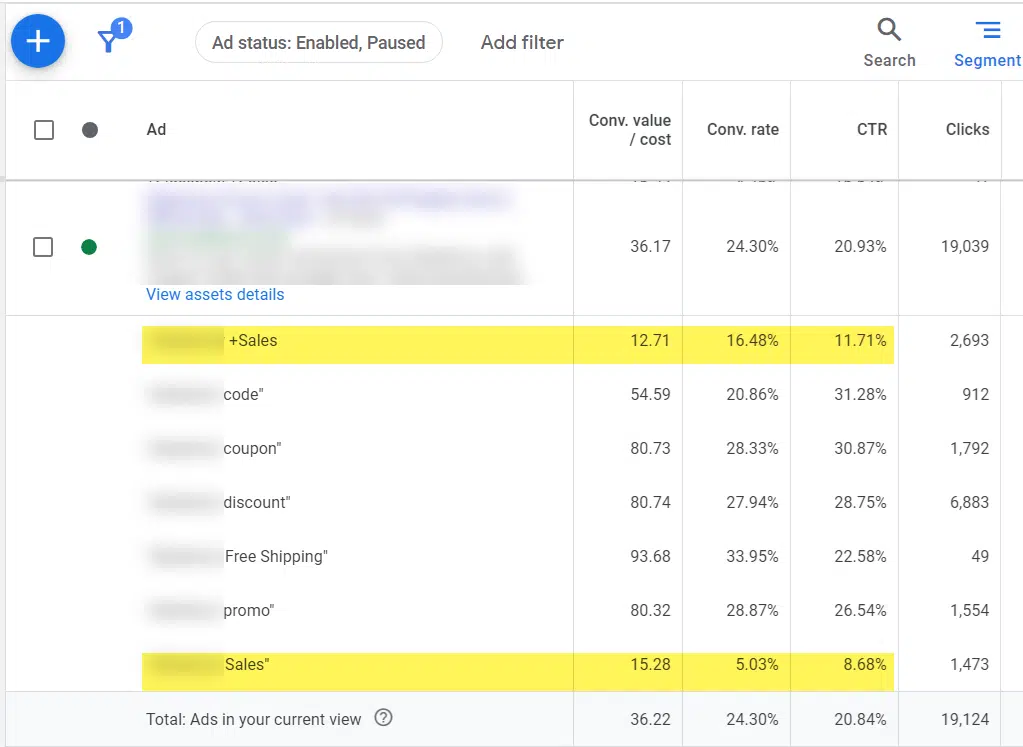
Shifting to a conversion-focused PPC framework
In Google’s push to drive more clicks year over year, qualifying the click is better than winning it.
Improving your CTR ratio is often better achieved by decreasing the denominator than increasing the numerator, and a lower CTR is better than a high CTR where the additional clicks don’t drive conversions for your business.
By de-prioritizing CTR in your evaluation of your ads, you’ll be able to focus on messaging that appeals more specifically to your target audience, improving ad performance in the process.
Opinions expressed in this article are those of the guest author and not necessarily Search Engine Land. Staff authors are listed here.
Related stories
New on Search Engine Land